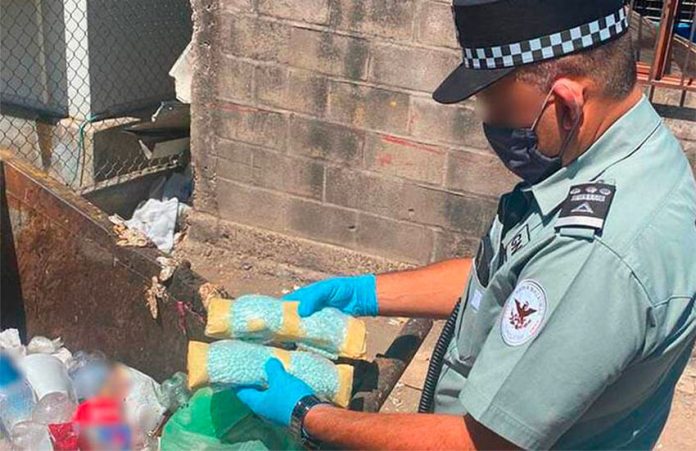Authorities have seized a record 1,852 kilograms of fentanyl this year, National Defense Minister Luis Cresencio Sandoval said Monday.
The army general told a press conference that seizures of the powerful synthetic opioid totaled 3,497 kilograms in the first three years of the current federal government – December 2018 to November 2021, a whopping 525% increase compared to the three previous years.
In part, seizures of the drug have increased because drug consumption and production patterns have changed, Sandoval said.
“There was a change in consumption, there was a change in drug markets due to the ease of producing synthetic drugs,” he said.
Criminal organizations are moving away from naturally grown drugs such as marijuana and opium and putting more resources into the manufacture and distribution of more powerful synthetic drugs, Sandoval said. The production and distribution of fentanyl – which is also mixed with other illicit drugs – yields higher profits for cartels, the army chief added.
Most fentanyl made in Mexico is illegally exported to the United States, where there is a drug overdose crisis that has caused more than 100,000 deaths in the 12-month period to April 2021, according to provisional data from the Centers for Disease Control and Prevention.
Cartels import fentanyl and precursor chemicals from Asia, especially China, to make the drug. The illicit products enter the country via Pacific coast ports such as Lázaro Cárdenas, Michoacán, and Manzanillo, Colima.
Sandoval also said that almost 125,000 kilograms of methamphetamine have been seized in the last three years, a 128% increase compared to the final three years of the previous government. The record seizures have occurred despite a lower number of narco-labs being dismantled over the past three years than in both the first and second halves of Enrique Peña Nieto’s 2012-18 presidency.
Cartels’ use of bigger, more productive labs is the main reason for the discrepancy.
“The laboratories that have been discovered or seized in this administration have had larger capacities, which has allowed us to seize a larger quantity of methamphetamine products,” Sandoval said.
Sandoval said that strategies used by security forces have been successful in both locating labs and identifying routes used to get drugs to market.
There have been some massive drug busts this year, including the confiscation of US $63 million worth of fentanyl, meth, heroin and marijuana in Ciudad Juárez, Chihuahua, in early December and the seizure of 118 kilograms of fentanyl in Culiacán, Sinaloa, in October.
Powerful criminal groups such as the Sinaloa Cartel and the Jalisco New Generation Cartel are involved in the production and distribution of such narcotics.
A trucker from Mexico was arrested last week after attempting to smuggle almost 8,000 kilograms of meth and 176 kilograms of fentanyl into the United States via the Otay Mesa border crossing between Tijuana and San Diego.
The seizures were the largest of either drug in the United States for both this year and last, U.S. authorities said.
While Sandoval touted the increase in narcotics seizures, security analyst Alejandro Hope opined that it might in fact be “a very bad sign.”
“It could be because of a greater effort, or it could be because there is a greater volume” of illegal drugs being produced, he told the Associated Press, adding that external indicators – such as overdose deaths in the U.S. and last week’s record bust – suggest that Mexican authorities “haven’t affected the flow in the least.”
